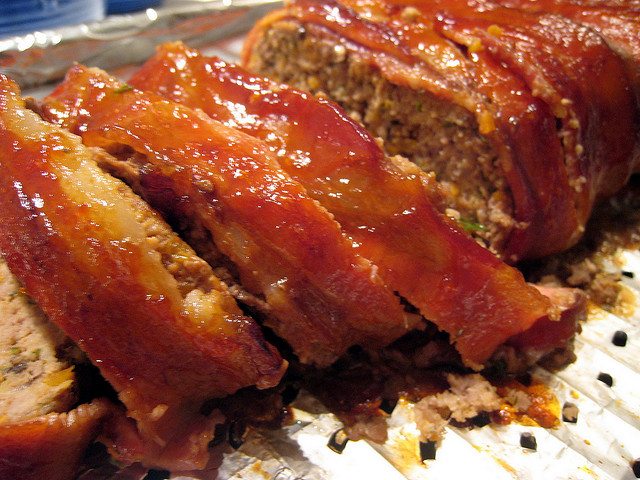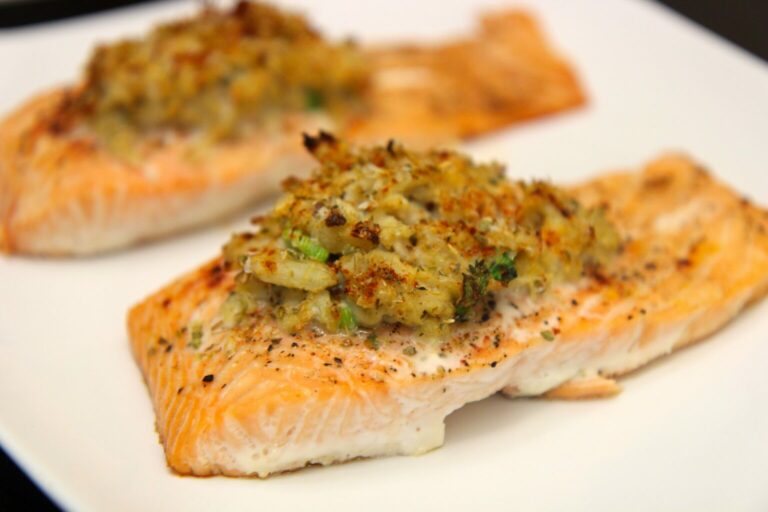Greek Roasted Leg of Lamb

A Sunday Memory: Greek Roasted Leg of Lamb
Close your eyes for a moment and imagine your kitchen filling with the savory scent of fresh rosemary and garlic, mingling with the warmth of roasted lamb. That’s what every family Sunday feels like to me. The first time I made a Greek roasted leg of lamb, I was honestly just hoping not to mess it up—but I ended up falling completely in love with it. Our kitchen became a gathering place, laughter echoing off the walls as everyone waited for that succulent, golden roast to hit the table.
Greek roasted leg of lamb is more than just a showstopping main dish; it’s a memory in the making. Whether you’re planning a laid-back Sunday dinner or a festive holiday spread, there’s just something magical about this classic Greek recipe.
Why You’ll Adore This Greek Roasted Leg of Lamb
I can think of countless reasons why this Greek roasted leg of lamb has become a favorite in my home, but let’s stick to my top four:
- Unbelievable Flavor: The simple combo of garlic, rosemary, and thyme (with just a kiss of lemon) completely transforms the lamb. It’s aromatic, bright, and just a little bit earthy—the kind of taste that lingers pleasantly for hours.
- So Simple, Yet Feels Fancy: Don’t be fooled by the mouthwatering result; this recipe is honestly straightforward! You’ll look like a pro, even if it’s your first roast.
- Perfect for Gathering: There’s something about carving into a roasted leg of lamb that brings everyone together. Seriously, people will wander into the kitchen, plates in hand, before you even call them!
- Hands-Off Cooking: Most of the time is hands-off roasting, leaving you free to focus on sides (or, let’s be honest, enjoy a good glass of wine).
Ingredients You’ll Need for Greek Roasted Leg of Lamb
Here’s everything you need to make true Greek roasted lamb at home (plus a few personal tips to make each ingredient shine):
- Leg of lamb (4-5 pounds): I recommend asking your butcher for a bone-in leg for juicier, more flavorful results. (Make sure to pat it dry with paper towels—you’ll get better browning that way.)
- 4 garlic cloves, minced: Fresh garlic works best; don’t skimp on this!
- 2 tbsp fresh rosemary, chopped: The star herb of this dish. If you only have dried, use about 2 tsp instead.
- 2 tbsp fresh thyme, chopped: Thyme adds a subtle depth that I absolutely adore.
- 2 tbsp olive oil: Go for extra-virgin if you can, since it adds richness to the marinade.
- 1 lemon, juiced: A pop of citrus brightens and tenderizes the lamb.
- Salt and pepper, to taste: I like to be generous with both—it brings all those flavors together.
- 1 cup chicken or vegetable broth: Keeps the lamb juicy while it roasts.
- Optional: potatoes and vegetables for roasting: I almost always toss some in—think potatoes, carrots, or even chunks of red onion. Nothing beats roast veggies soaking up those savory pan juices!
Step-by-Step Guide: Making the Perfect Greek Roasted Leg of Lamb
Ready? Here’s how I make this lamb roast a centerpiece to remember—stress-free and absolutely delicious.
- Preheat the oven: Set it to 375°F (190°C). (Give it a bit of extra time if your oven’s on the slower side.)
- Mix the marinade: In a bowl, combine minced garlic, rosemary, thyme, olive oil, lemon juice, and a generous sprinkling of salt and pepper.
- Massage the flavor: Rub the herb marinade all over the leg of lamb—this is messy but fun! Make sure to cover every crevice.
- Roast with broth: Set the lamb in your roasting pan. Pour the broth around (not over) the meat to keep things moist.
- Add veggies if you want: Scatter potatoes and vegetables around the lamb so they’ll roast right in those drippings (yum!).
- Roast to perfection: Slide into the oven for 1.5 to 2 hours. I use a meat thermometer and aim for 145°F (63°C) for medium-rare (which keeps it juicy!).
- Let it rest: Resist the urge to carve right away—let your roasted lamb rest for at least 15 minutes so the juices settle back in.
Honestly, the hardest part is waiting for it to rest. The aroma alone will drive you wild!
My Secret Tips and Tricks for Greek Roasted Leg of Lamb Success
Over the years, I’ve stumbled upon a few secrets that make Greek roasted leg of lamb go from good to unforgettable:
- Score the meat: Before rubbing on the marinade, gently score the surface with shallow cuts. The flavors sneak in extra deep that way!
- Temperature matters: Invest in a digital thermometer (no guessing games here). Overcooked lamb can get tough, and that’s just sad.
- Let it come to room temp: Before roasting, let the lamb sit out for 30-40 minutes. This helps it cook more evenly.
- Resting is not optional: I know it’s tempting, but don’t skip the resting stage! It truly makes the difference between juicy and dry lamb.
- Leftover veggies: Roasting potatoes, carrots, or parsnips with the lamb lets those veggies soak up all the garlicky, herby pan juices (which, trust me, you’ll want to eat by the spoonful).
Creative Variations and Ingredient Swaps
Don’t be afraid to switch things up! Here are some fun ideas and swaps for your Greek roasted lamb:
- Herb swap: Out of rosemary or thyme? Try oregano (for that classic Greek aroma) or even a bit of fresh mint.
- Citrus twist: Substitute lemon with orange or even a little splash of white wine for a softer acidity.
- Root veggie mix: Sweet potatoes, butternut squash, or fennel work beautifully, especially if you want to get creative with seasonal ingredients.
- Mediterranean flair: Sprinkle in a handful of kalamata olives or halved cherry tomatoes for the last 20 minutes of roasting.
- Go boneless: For easier carving, use a boneless leg of lamb—just reduce roasting time a bit and be sure to check that internal temp!
How to Serve and Store Your Greek Roasted Leg of Lamb
When it’s time to serve, thinly slice the Greek roasted leg of lamb against the grain for maximum tenderness. We love it piled onto a big platter with all those roasted veggies and a generous drizzle of those herby pan juices (absolutely key for moist, flavorful lamb).
Leftovers:
- Store slices in an airtight container (fridge for up to 3 days, freezer up to 2 months).
- Reheat gently in the oven, covered, with a splash of broth.
- Leftovers make fantastic lamb sandwiches, pita wraps, or even tossed onto a vibrant Greek salad.
FAQs: Your Top Questions About Greek Roasted Leg of Lamb Answered
Can I make Greek roasted leg of lamb ahead of time?
Absolutely. You can marinate the lamb up to 24 hours in advance. (Sometimes I swear it tastes better this way!) Just bring it to room temp before roasting for even cooking.
What if I don’t have fresh herbs?
No worries. Dried herbs work just fine—just reduce the amount (1 teaspoon dried for every tablespoon fresh).
How do I know when my lamb is done?
For a classic medium-rare, aim for an internal temp of 145°F (63°C). Use a meat thermometer for best results—it’s really worth it!
Can I use this recipe with a smaller leg of lamb?
Definitely. Just adjust the cook time and check early; smaller cuts roast faster but will be just as flavorful.
What pairs well with Greek roasted leg of lamb?
Roasted potatoes, a bright Greek salad with feta, crusty bread, or even tzatziki sauce—just about anything Mediterranean!
I hope you love this Greek roasted leg of lamb as much as my family does. Light a candle, pour a glass of something wonderful, and let those comforting aromas fill your home. If you give this recipe a try, drop a comment below or tag me on your dinner spread—I’d love to hear your stories, too!





